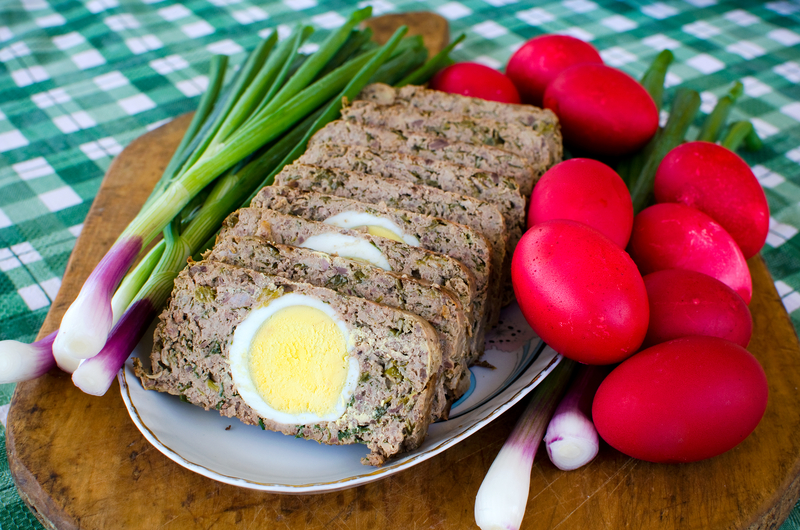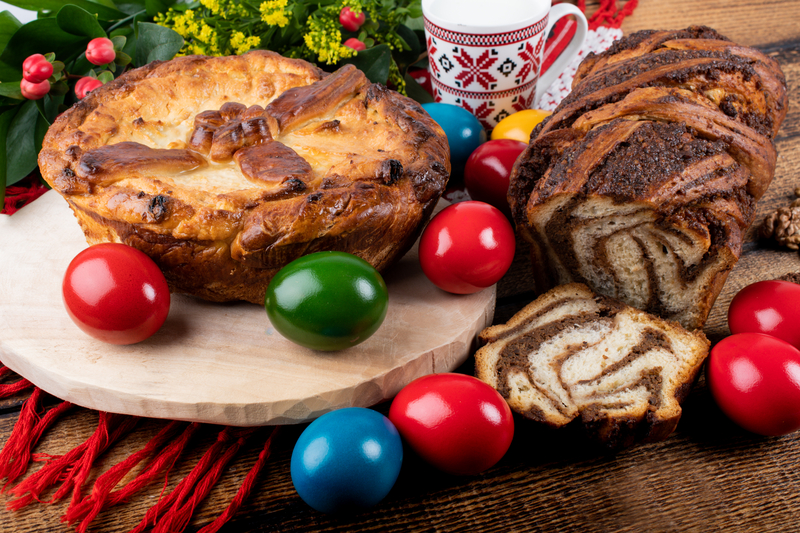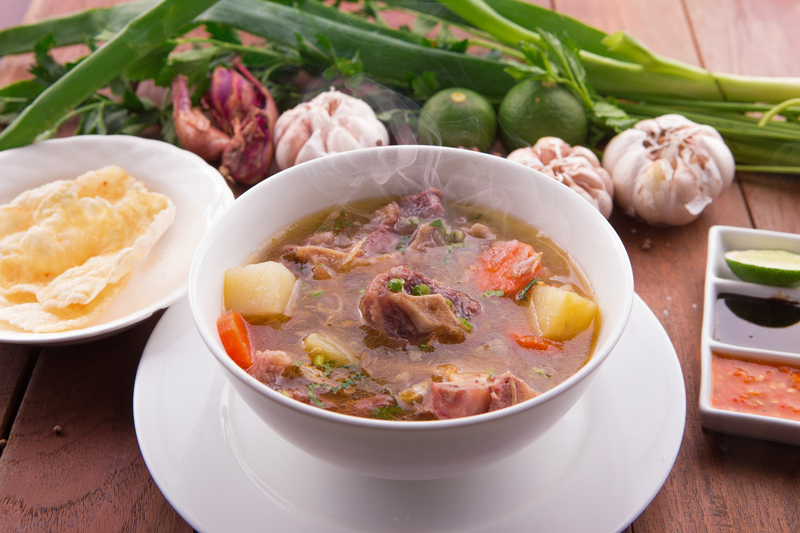
The Easter holidays also bring hearty meals, larger portions than usual, which it is not very polite to refuse, especially if you are visiting, and in just a few days there is a risk of gaining 1 to 3 kilograms. In addition. Holiday meals are usually heartier than on ordinary days, and one of the biggest temptations is to sit with the whole family for several hours at a table full of goodies, during which many dishes and food are eaten. Is it possible to eat everything and at the same time correctly? We try to find the answer with Ligia Alexandrescu, consultant in sports nutrition, nutrition education and nutrition communication.
A nutritionist’s advice for the Easter meal: a break between meals of at least an hour, plenty of greens and water
Easter holidays are a special time both from the point of view of emotional and culinary charge, says Ligia Alexandrescu. This is a period when people eat very consistently, and Romanian cuisine offers a wide variety of traditional dishes that can be found on the same table on the same day.
“And here we have to be a little careful, because the joy of these days is great for us Romanians, which means many, hearty meals, large portions that are not refused, so there is a risk of weight gain From 1 to 3 kilograms this Easter days. In addition, we have to be careful about how we consume food, how we combine it, even if we taste everything,” advises nutritionist Ligia Alexandrescu.
Traditional Romanian Easter dishes are very diverse in composition and are largely based on animal proteins. In addition, we also have a lot of eggs in these traditional foods, says Ligia Alexandrescu.
“We have meat, breadcrumbs, meat borscht, beefsteak and, of course, a lot of delicious carbohydrates, that is, there is kozonak, paska, and especially alcohol, which is also a carbohydrate. If we talk about the arrangement of the traditional Easter meal, then, especially if you observed fasting, so as not to wake up with a changed state of well-being – and over time this may also happen, that is, a digestive crisis may also arise. later, not necessarily on Easter – we have to control very well what we eat and especially in what combinations. That is, it is very important to arrange the Easter menu, which we offered either as hosts or as guests,” the nutritionist emphasizes.

Lihiia Alexandrescu,sports nutrition, food education and food communication consultant / Photo: Agerpres
Ligia Alexandrescu’s first tip is to leave at least an hour between meals: “In this way, the risk of indigestion is greatly reduced.”
In addition, lettuce, spinach, cucumbers, radishes, arugula are greens that should accompany meals rich in meat and eggs today, says the nutritionist.
The size of the consumed portion is also very important, that is, we are looking for the quality and flavors of the food, and not to fill the stomach. It is advisable to avoid fatty, fried food, heavy sauces, even in salads. Very high-calorie and especially saturated fatty sauces are often added to salads. All this contributes, of course, to indigestion.”
Fruit juices, excess spices and very acidic foods should also be avoided.
If we talk about good digestion, we talk about hydration: “Between meals it is very important that we try to drink water in small quantities – we do not drink half a liter of water between Easter meals, but in small quantities so that the whole body hydrates and the kidney function does not forced Drinking a lot of water at the same time means elimination, rapid diuresis, which means kidney fatigue, while the body does not stay hydrated. Therefore, we consume water throughout the meal, in small amounts, between meals, and in this way we support the digestive system and avoid dehydration. We know very well that dehydration slows down the metabolism.”
Easter breakfast: egg or crumble, not egg and crumble
Precisely because we have many variations of the traditional foods we eat once a year, it is important to stagger these foods so that we eat them at different meals, rather than at one meal.
We can start Easter morning with a breakfast of vegetables – tomatoes, radishes, green onions – some whole grain bread, which contains a lot of fiber, and eggs.

Fraction / Photo: Masezdromaderi | Dreamstime.com
Another option is caviar, but it is good to eat it separately from eggs. Therefore, for breakfast, we use either eggs or fractions, and not together, especially if you used to fast.
On the other hand, everything that means a snack – whether we are talking about an egg or about meat – should be eaten in the morning, so that we do not load the lunch with too many dishes.
The preparation can be from poultry or lamb.
For breakfast, in addition to coffee, we can drink tea that helps digestion – acacia tea, St. John’s wort, calendula tea, all of them are teas that stimulate digestion very well.
Paska and kulich only in the break between meals
The stars of the Easter celebration, like dessert, are paska and kozonak.

Easter, kozonak and eggs on the Passover table / Photo: Cristina Alexe | Dreamstime.com
Ideally, dessert should be eaten between meals, 2 hours after breakfast, and should not exceed 150-200 grams.
It is also ideal that paska and kozonak are prepared at home to have control over the ingredients. If it is not possible to prepare them at home, we can also consume homemade kozonak and paska, mashed and without additives, to load their already hypercaloric structure.
Soup, nutritionist’s recommendation for Easter dinner
Easter dinner, when we are visiting or on a visit, can start with either lamb or poultry: “Meat soup can be eaten as the first course, because it is very hydrating and, of course, also satiating. In this way, we manage to eat less during the next meal,” says nutritionist Ligia Alexandrescu.
The second course is usually steak or stew – green vegetables, cooked or fresh, help us count calories better.

soup / Photo: Hani Eriani | Dreamstime.com
“Of course, there are households where sarmal is also prepared on Easter, but even if this happens, it is good to try to leave it for the second day of Easter, so as not to overload the table from the first day. Of course, sarmals are the prerogative of Christmas – as they say, Christmas, village, Easter, fudulu. On Easter, we eat a little lighter, but some prefer to have sarmale on the Easter table as well.”
It is also recommended to drink coffee between meals because it has a choleretic function and stimulates bile secretion due to the antioxidants it contains and the bitter taste. Therefore, unsweetened coffee is ideal between meals.
And if you want to eat dessert as well, then we follow the rule from breakfast: after the last meal, it is best to wait one and a half to two hours to enjoy Easter and kozonak.
—
Photo: Dreamstime..com, Agerpres.
Source: Hot News
Ashley Bailey is a talented author and journalist known for her writing on trending topics. Currently working at 247 news reel, she brings readers fresh perspectives on current issues. With her well-researched and thought-provoking articles, she captures the zeitgeist and stays ahead of the latest trends. Ashley’s writing is a must-read for anyone interested in staying up-to-date with the latest developments.